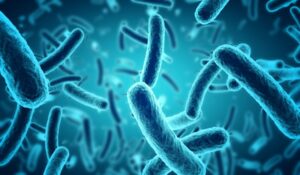
Tooth decay has long been associated with a few well-known culprits, most notably Streptococcus mutans, the bacteria often blamed for starting the process that leads to cavities. But now, researchers have uncovered a new microbial accomplice: Streptococcus sputigena (S. sputigena). This previously overlooked bacterium appears to play a surprising role in intensifying tooth decay, and its discovery is reshaping how scientists think about dental plaque and cavity formation.
What is S. sputigena?
S. sputigena is a species of bacteria that was once considered a minor player in the oral microbiome. It’s naturally present in the mouths of many people, but until recently, it hadn’t been studied extensively in the context of dental disease. Thanks to new imaging and genetic sequencing technologies, scientists have now identified it as a key contributor to the development of tooth decay, particularly when it teams up with other bacteria.
How S. sputigena Promotes Tooth Decay
Tooth decay begins when bacteria in the mouth feed on sugars and produce acid as a byproduct. This acid erodes tooth enamel over time, leading to cavities. While S. mutans has been known to initiate this acid-producing process, S. sputigena appears to supercharge it.
Recent research shows that S. sputigena forms a sticky, protective “scaffold” around other bacteria, especially S. mutans. This scaffold creates a more robust and organized biofilm (commonly known as dental plaque) that adheres tightly to tooth surfaces. Within this biofilm, acid-producing bacteria are shielded from saliva and fluoride, giving them more time to attack enamel.
Even more concerning, S. sputigena seems to promote the spread and severity of decay. When it is present in dental plaque, cavities tend to grow faster and affect larger areas of the tooth.
Why This Discovery Matters
The identification of S. sputigena as a decay-related bacteria marks a major step forward in understanding the complex ecology of the mouth. Rather than viewing tooth decay as the work of a single species, researchers now see it as a collaborative attack by a group of bacteria that support each other.
This insight opens the door to more targeted and effective treatments. For example:
- New antimicrobial therapies could be developed to specifically disrupt the S. sputigena scaffold.
- Probiotics might be engineered to counteract harmful biofilm formation.
- Diagnostic tools may soon be able to detect high-risk bacterial combinations earlier, allowing for preventive care before cavities form.
What You Can Do Now
While science continues to study S. sputigena, the best way to protect your teeth is by maintaining strong oral hygiene habits:
- Brush twice a day for two minutes.
- Floss daily to remove plaque between teeth.
- Limit sugary snacks and drinks.
- Visit your dentist regularly for cleanings and exams.
The discovery of S. sputigena reminds us that the mouth is home to a complex and dynamic ecosystem. Understanding the full range of bacteria involved in tooth decay will help dentists and researchers develop better strategies for prevention and treatment. In the meantime, staying vigilant about oral care remains your best defense against decay no matter which bacteria are involved.
About the Author
Dr. Robert Saphner earned his dental degree from the University of Minnesota and has since completed over 500 hours of continuing education. He holds Fellowship status in the Academy of General Dentistry, a distinction achieved by only 6 percent of dentists in both the U.S. and Canada. He has also studied with Spear Education. Dr. Saphner is also involved in various professional dental organizations, including the American Dental Association and Wisconsin Dental Association. Keep old and new bacteria alike away with a check-up and cleaning today! Schedule your appointment online or call us at (608) 668- 6415.

